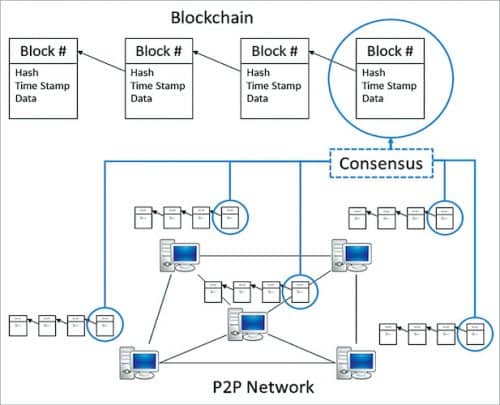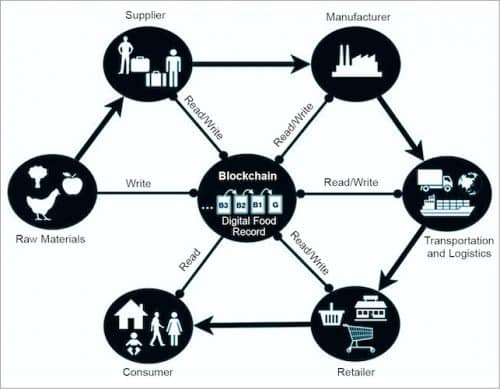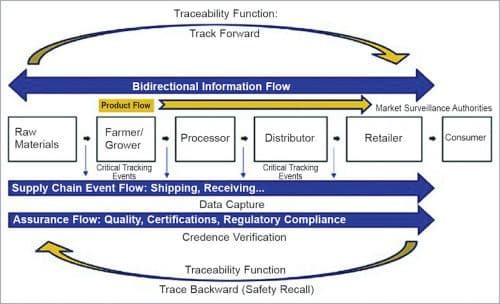Food fraud is a persistent problem in our globalised food supply chain. Driven by the complexity of today’s global food system, food fraud continues to thrive. So, the need to prevent it is becoming increasingly compelling, not only from the standpoint of public health but also from legal and financial concerns.
Food fraud costs the global food industry about $40 billion each year, according to Dr John Spink who is known for his work on anti-counterfeiting and food safety. The food industry could save up to $31 billion by tracking food on its way from farms to consumers via blockchain. As long as there is profit to be made (and there is), everything from honey and milk to peanuts and whiskey are at risk of adulteration. Regardless of the level of safety implications or where the vulnerability occurred, suppliers are largely liable for the impact—but every stakeholder in the food supply chain suffers.

Unscrupulous suppliers sometimes pass off cheaper products for more expensive varieties. Occasionally, it is a different variety altogether. Horse meat scandal and fish meat scandal in European Union during 2016 are among the many examples.
It took the United States Food and Drug Administration more than two months to identify the source of Salmonella-tainted Maradol papayas, which have thus far sickened more than 200 people in 23 states, resulting in 65 hospitalisations and at least one death. Had blockchain been used to create a digital ledger of the distribution chain, the farm in southern Mexico could have been identified within a matter of seconds.
What’s keeping food fraud alive?
Here are some reasons behind the problem:
The food supply chain runs on outdated practices. Food fraud has increased by 60 per cent over the last couple of years due to lack of transparency, accountability, and effective regulations. Though, recently, regulators are demanding state-of-the-art practices and technology to help bring organisations up to the required standard and ultimately create a more transparent food system.
Complex supply chains create blind spots. Many companies simply lack the awareness of where and how they are susceptible to food fraud. However, with up to ten percent of the food system affected by food fraud, weak links can occur across raw materials, ingredients, products, and packaging.
Vulnerable regulatory systems enable tampering. Current practices of storing compliance data either on paper or in centralised databases are susceptible to inaccuracies, hacking, and intentional errors motivated by corruption.
Blockchain
In principle, a blockchain should be considered as a distributed append-only timestamped data structure. Blockchains allow us to have a distributed peer-to-peer network where non-trusting members can verifiably interact with each other without the need for a trusted authority (Christidis and Devetsikiotis, 2016).

Blockchain for food and beverages
A shared digital food supply chain powered by blockchain enables full transparency by digitising transaction records and storing them in a decentralised and immutable manner, eliminating opportunity for fraud across the food chain. “Blockchain technology enables a new era of end-to-end transparency in the global food system—equivalent to shining a light on food ecosystem participants that will further promote responsible actions and behaviours,” says Frank Yiannas, Walmart’s vice president for food safety. “It also allows all participants to share information rapidly and with confidence across a strong trusted network. This is critical to ensuring that the global food system remains safe for all,” he adds.
Some advantages of adopting blockchain technology in food supply chain are:
End-to-end traceability
Increased surveillance shines a light on each link in the food chain, enabling real-time traceability of food fraud culprits—and creating accountability.
Collaboration
Secure data-sharing between food chain actors eliminates the possibility for participants to move fraudulent foods unknowingly.
Transparency
Improved transparency allows fewer opportunities for fraudsters to penetrate the supply chain, and permanent records enable better management of material safety and quality standards.
Blockchain and IoT, each of which bring their respective strengths, continue to be adopted by the food and beverage industry. Over the past few months, a variety of players, including giants like Nestlé and Carrefour, have reported their blockchain-powered initiatives within the field.
The most adopted blockchain tracking solution within the field is IBM’s Food Trust, which is based on the Hyper Ledger Fabric blockchain protocol. The platform went live in October 2018, since when millions of individual food products have reportedly been tracked by retailers and suppliers using the Food Trust blockchain. Most recently, it was reported that salmon farming company Cermaq and smoked salmon producer Labeyrie were using IBM’s cloud blockchain technology to trace their product supply chains.
The blockchain modules are designed to help participants in the food system—from producers, suppliers, manufacturers, distributors, and retailers—to make their supply chains less susceptible to fraud. The supply chain members can transparently trace food products in the supply chain upstream and downstream, shining a light on the authenticity of both raw ingredients and packaged goods. This enables the participants to securely upload, manage, and access transactional data, helping detect or mitigate fraudulent action along the supply chain. Additionally, this assists the certification agencies to share inspections, quality certifications, and registrations, enabling accountability for acquired data at each step.

In addition to Tyson Foods, Nestlé, Dole, Walmart, and Kroger, other companies in the collaboration include Driscoll’s, Golden State Foods, McCormick and Co., McLane Co., and Unilever. They are working with IBM to identify new areas where the global food supply chain can benefit from blockchain.
“Unlike any technology before it, blockchain is transforming the way like-minded organisations come together and enabling a new level of trust based on a single view of the truth,” says Marie Wieck, general manager of IBM Blockchain. This “single view of the truth” refers to the digital ledger of transactions that is available to all participating members, but which cannot be altered without leaving a record of who changed what and when.
Bitcoin and other similar cryptocurrency applications use an open-source, peer-to-peer network of decentralised computers to process the complex blockchain algorithms and maintain system integrity. Corporate blockchain applications, on the other hand, including IBM’s and those of large financial institutions, are ‘closed’ and use their own centralised computer systems and private networks.
Conclusion
Logistics and supply chain management is due for an overhaul. As globalisation increases the complexity of the food supply chain, blockchain and other innovative technologies can help retailers keep track of suppliers, minimise crises, and remain competitive. Consumers also stand to benefit from a safer, more transparent food supply chain. Gaining a more accurate source of information could attract conscious consumers and keep the industry honest. Retail giants are already implementing blockchain technology in their logistics and supply chain management strategies. Market trends will only continue to drive innovation in blockchain logistics.
Dr Veerendrakumar M. Narasalagi is associate professor and head of department, Department of Management Studies (MBA), BLDEA’S, V.P. Dr PGH College of Engg & Tech, Bijapur (Karnataka)






